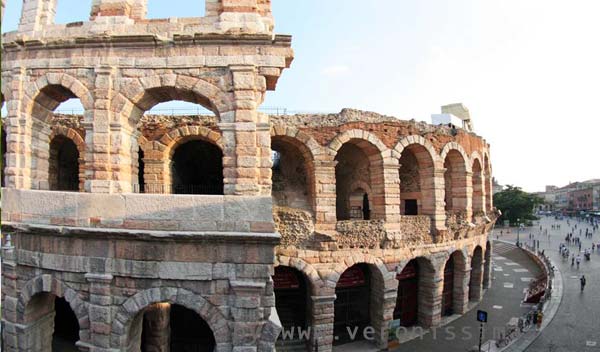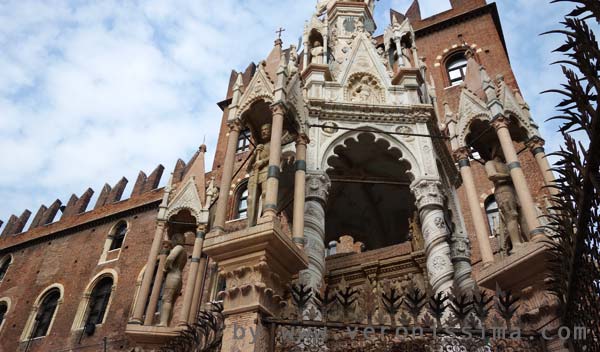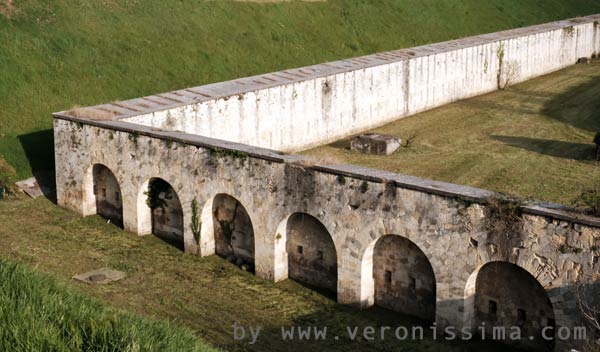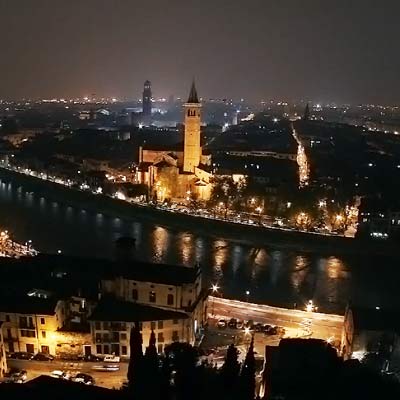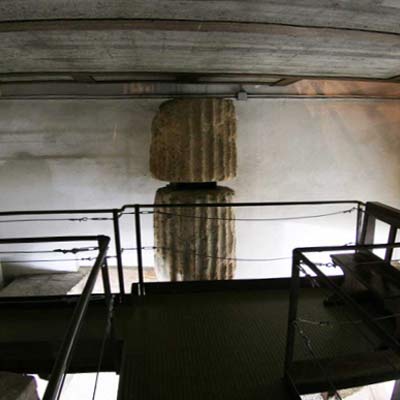Austrian Age Verona Tour (The Habsburg Empire)
During the fifty years of Habsburg domination Verona and the whole territory were scattered with impressive military constructions. Walls, bastions, fortresses, barracks and logistical buildings. Many of these can be visited with unusual and exciting guided tours that will make you relive the dramatic events and battles for the unification of Italy.
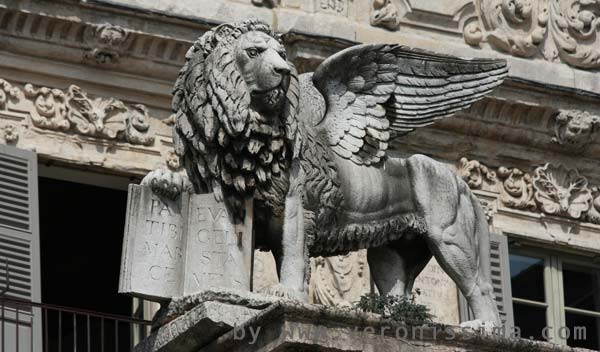
The tours of Austrian Age Verona are particularly suitable for a school trip aimed at deepening the themes of the Risorgimento (Italy independence movement), for history, architecture and military strategy enthusiasts or for the curious in search of an unusual itinerary.
Oncoming Tours
Info & Bookings:
+39 333 2199 645 info@veronissima.com P.I. 03616420232 C.F. CPPMHL74L13L781C
The Historical Context
In 1815, after Napoleon's defeat, the European powers met in Vienna in a congress to establish the new European geopolitical order. The houses that ruled the various states before the Napoleonic revolution returned to power. However, the former possessions of the Venetian Republic, including Verona, were assigned to the Habsburg Empire.
Thanks to its strategic position Verona became the main stronghold of the Quadrilateral, a defensive system connecting four cities: Verona, Peschiera on lake Garda, Mantua and Legnago.
Austrian engineers led by Lieutenant Colonel Franz von Scholl redesigned the appearance of Verona, creating a formidable defensive system with bastioned walls and forts. Functional buildings were erected inside the city: a military hospital, an arsenal, a massive bakery where bread and biscuits were produced for the troops of the quadrilateral. On San Pietro hill, where over the centuries the rulers of Verona had erected their fortress, the Austrians built a castle, a clear sign of foreign domination.
All these buildings can still be seen in Verona, astonishing the visitor for the beauty and elegance that the Austrians could put in them in spite of their military function. Vienna Architects drew inspiration from various styles of Verona, especially Romanesque and Gothic, using local materials and perfectly blending their works in the urban grid.
Austrian Verona Tours
The guided itineraries in Austrian Verona wind along the fortifications and the city buildings and can extend to the works outside the city and in the province, especially towards Lake Garda. By bus or on foot, you can go along the city walls, visit the palaces of the Habsburg command, the forts, and the logistic buildings. The tour guide will illustrate how the Austrian interventions merged with the pre-existing medieval and Venetian structures to which ramparts, Carnot walls, and bastions were added to adapt them to the new technologies and military strategies. Tous can extend to the constructions outside the city and in the province, especially towards Lake Garda.
Itinerary 1: Fortifications on the right side of river Adige
Duration
- Half Day:
- Approximately 3h
Accompanied by our tour guide, you can visit the fortifications of the southern sector of Verona. Facing the plain and the border towards Lake Garda, this was the side most exposed to the attack of the Piedmontese. In the First War of Independence, the army of Carlo Alberto of Savoy arrived just over a kilometer from this section of the wall, causing some serious fear in General Radetzky.
The walls of Verona are still well preserved and allow a careful analysis of the sophisticated defensive system designed and built by the Austrian genius under the initial direction of General von Scholl. During the guided tour will be analyzed the Austrian interventions on the Venetian structures designed in '500 by Michele Sanmicheli. The function of the pentagonal bastions, of the Carnot walls, of the embankments close to the old Venetian wall will be deepened. Through the "poterne", the connecting tunnels between inside and outside, the tour guide will take you to discover the Austrian firing positions. At the top of the embankment, some original artillery pieces that miraculously escaped re-melting have been recovered and mounted on concrete shafts. These are rifled cannons that will allow to deepen the close relationship between ballistic evolution and design of the defenses. The visit also includes Porta Palio, Porta Nuova, Porta San Zeno, splendid examples of Renaissance military architecture designed by Sanmicheli. There will also be a stop at the imposing Austrian military hospital and the Mastino barracks, today transformed into the court of Verona.
he itinerary to the discovery of the Austrian fortifications of Verona can be a stand-alone visit or can integrate another Risorgimento itinerary of Verona or a guided tour with a historical theme.
If you want to know more

Michele Sanmicheli architect
FIND OUTAdige river left bank
The Adige River, since Roman times, has always divided the city in two: a flat part on the right bank, a hilly part on the left. Given the different conformation of the terrain, the two halves have always been protected by defensive systems with their own characteristics.
In the aftermath of the peace of Lunéville of 1801, the Adige became the boundary line between French and Austrian territory. Like an ante-litteram Berlin, Verona was divided in two: the right bank to the Napoleonic, the left bank to the Austrians. Even today, the latter is called Veronetta, as the French called it in derogatory terms. Fortifications and works on the left bank of the Adige began before the Congress of Vienna in 1815. However, it was after 1837 that the hills to the left of the Adige were also affected by an organic and structured defense project. The old Veronetta also became the site of some other Hapsburg buildings that we will see in our guided tour.
Itinerary 2: east side
- Duration:
- Apx 3h
Ask for further information or book the tour:
+39 333 2199 645 info@veronissima.com P.I. 03616420232 C.F. CPPMHL74L13L781C
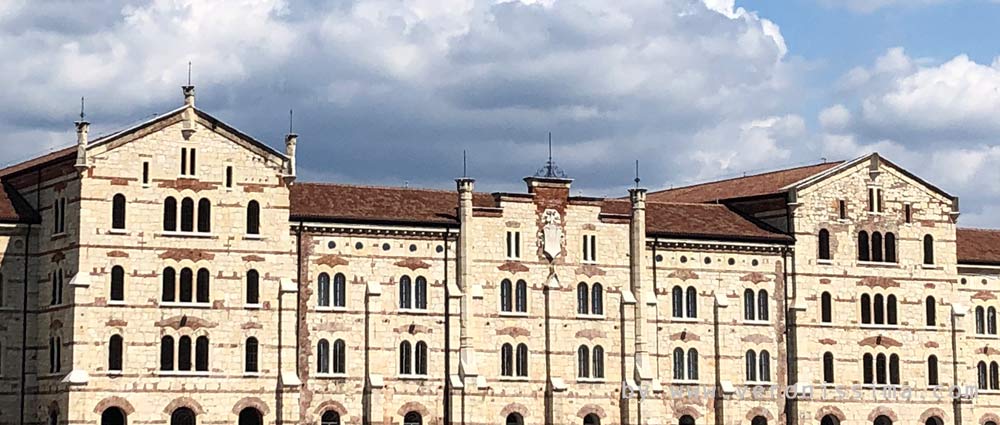
At the height of their presence in Veneto, the imperial troops arrived at 120,000 men. To feed such an army, the Santa Marta complex was built in Verona, a huge bakery that baked bread and biscuits for the soldiers scattered throughout the territory.
We start from Porta Vittoria, where since the Middle Ages the wall ended at the Adige River, perhaps with a barrage system of which we can see the remains in bricks.
From there we continue along the old wall and the Venetian bastions with the adjustments made by the Austrians. Along the way is flanked by the Cimitero Monumentale. There is an Austrian section with the tomb of von Scholl and Radetzky's wife.
The Bastione delle Maddalene, recently restored and transformed into a museum, offers the rare opportunity to see inside one of these typical defensive structures. Plastics and data sheets provide a deeper understanding of Verona's entire defensive system. From here, you can admire the Santa Marta Barracks in all the splendor of its recent restoration. It was the bakery for the Austrian troops of occupation.
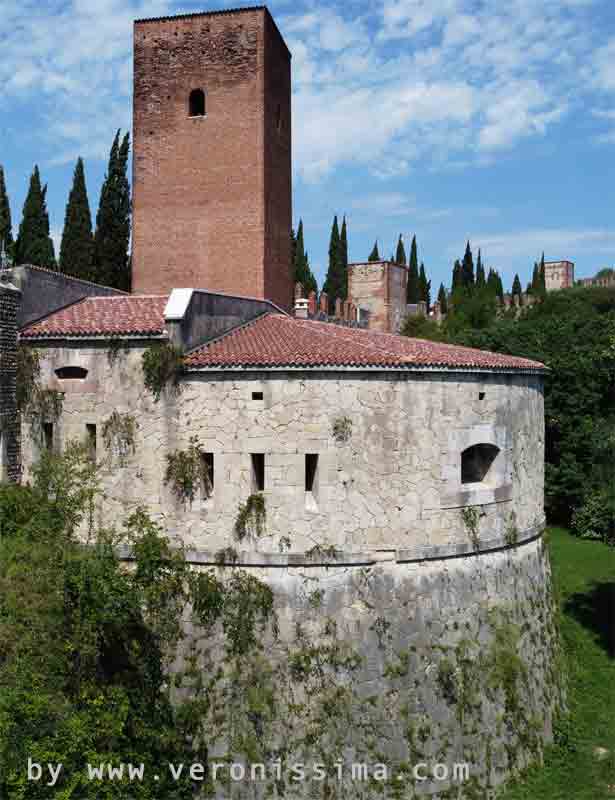
Then we continue to Vescovo gate, and start the climb to the hilly part of the walls. Along the way you will see the shoe battery (pictured), restored and can be visited by appointment, that of controscarpa, and the shielded towers of the old wall of Cangrande partly maintained by the Austrians since an artillery attack from this side was unlikely. The panorama over the city from above is extraordinary.
Itinerary 3: west side
- Duration:
- Apx 3h
Ask for further information or book the tour:
+39 333 2199 645 info@veronissima.com P.I. 03616420232 C.F. CPPMHL74L13L781C
The walking tour starts from the Venetian porta San Giorgio. The Austrians included it in a complex system of bastioned walls that reached the Adige at San Giorgio. A house near the church of Sanmicheli still bears the signs of French gunfire following one of the many clashes between the two armies that faced each other on their respective banks of the river for almost 15 years. From there continue to the teatro Romano and ponte Pietra. From here you can admire the forts on the top of the hills: Forte San Leonardo, Fort Santa Sofia and Forte San Mattia. We then take the funicular that leads to Castel San Pietro, the Austrian barracks where they resided the old soldiers in charge of the fortifications of the hill area. For the most "fit" groups you can climb the steep stairs. On the terrace of Castel San Pietro you can enjoy a spectacular panoramic view of the city and appreciate its strategic location.
Continuing behind Castel San Pietro you can connect to the hilly section of the medieval walls with the Austrian interventions and then descend from the neighborhood of San Giovanni in Valle up to the church of San Tommaso, with the austere neo-Romanesque building that housed the Austrian Tribunal.
Itinerary 4: Hillside fortress
- Duration:
- Apx 3h
Transportation (car, bus, or electric bike) is required for this route. It can also be done on foot but you need some training to walk uphill.
Ask for further information or book the tour:
+39 333 2199 645 info@veronissima.com P.I. 03616420232 C.F. CPPMHL74L13L781C
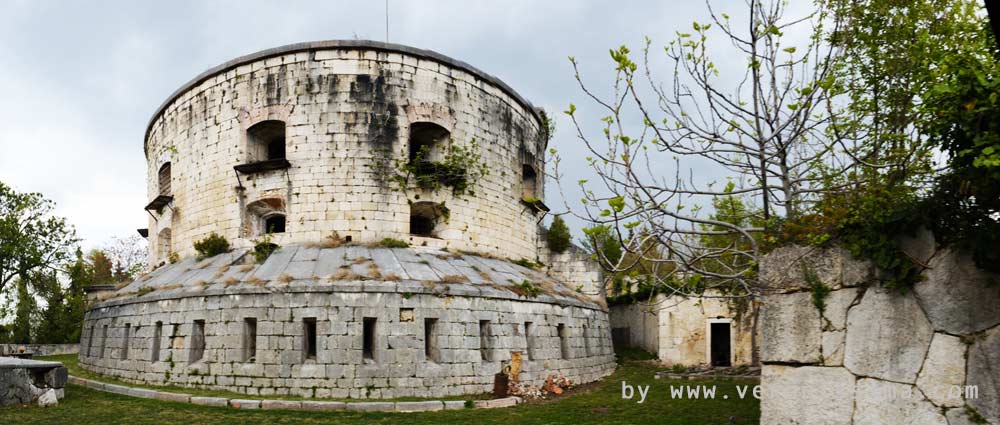
Forte Sofia in Verona with its characteristic circular shape. It was one of the Maximilian towers built on the hills of Verona that since then took the name of Torricelle.
The tour starts from porta San Giorgio. From here you take the winding uphill road that leads to the Torricelle. The hillside area of Verona is so named because of the number of Austrian towers and forts built between 1830 and 1866. A first stop (if the size of the vehicle allows) is at Castel San Pietro, the Austrian barracks built close to the city. The route then continues on to Fort San Leonardo, which has now been converted into a church and is easily reached even by larger coaches. The panorama that can be admired from the square is extraordinary. The artillery batteries had a clear view as far as the morainic amphitheater of Lake Garda, which can be seen on the horizon. Further down is the other Austrian fort Santa Sofia. Once back on the bus, it will be possible to see Fort San Mattia from the outside and continue on to the Torre Massimiliane. These were small circular forts that covered with their shot some uncovered zones of the hilly defensive system. Even if in a state of abandonment they amaze for the harmony and the architectural elegance. Going down from the opposite side we will be able to form to Forte Biondella, that it covered the east side of the hills.
Itinerary 5: The buildings of Habsburg power
- Duration:
- Apx 2h
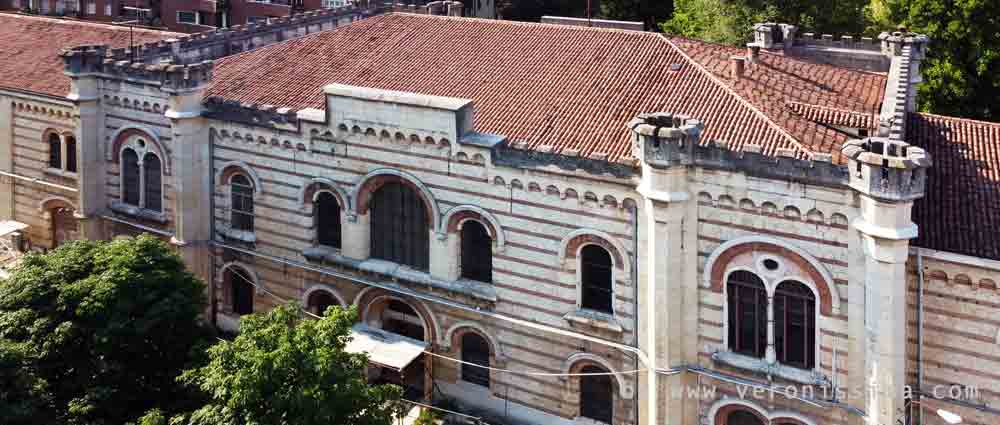
In order to supply the immense Hapsburg army stationed in Veneto with everything they needed, an arsenal was built in Verona to rival that of Vienna in size and production capacity.
Ask for further information or book the tour:
+39 333 2199 645 info@veronissima.com P.I. 03616420232 C.F. CPPMHL74L13L781C
The tour takes place on foot. It starts from the Arsenale in neo-Romanesque style, where were made the equipment for the troops stationed in the fortresses of the quadrilateral. Passing through the magnificent Scaliger bridge then comes to Castelvecchio, which for nearly six hundred years was the seat of the garrisons that took turns to control Verona. During the Austrian era, the Scaliger manor was temporarily the seat of the court and the high keep was used for the optical telegraph. Nearby is Palazzo Carli, which was the Veronese residence of Marshal Radetzky. Here, in 1866, the formal passage of the Veneto region was signed from the Austro-Hungarian Empire to France, which then "turned it over" to the House of Savoy. The palace is still a military base, and can normally be visited from the outside. With prior authorization it is possible to enter inside for a more detailed guided tour. Not far away is Palazzo Canossa, the Renaissance palace designed by Sanmicheli that hosted Zar Alexander I during the Congress of Verona in 1822. Continuing towards Piazza Bra you come to the Gran Guardia Nuova, today Palazzo Barbieri, austere neoclassical building that was the seat of the Austrian Command of Verona. Continuing along the municipal wall we arrive at Verona's Monumental Cemetery, another Austrian architectural complex in which there is an area reserved for the Hapsburg tombs including that of Radetzky's wife, Francesca Strassoldo, and that of General von Scholl, creator of the fortified system of the square of Verona.
Verona Province
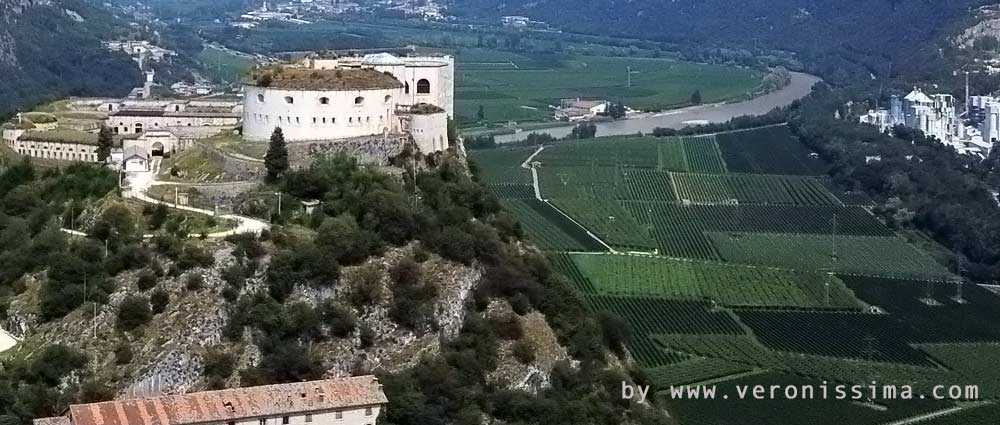
In a strategic position, at the entrance to the Adige Valley, a direct supply line with the motherland, the Austrians built the fort of Rivoli.
With the introduction of the ribbed cannon in the mid-19th century, artillery became more accurate and capable of striking from a greater distance. It was therefore essential to stop the attacking army even further from its target. Thus, a series of forts were built towards the western border, further extending the outer circle of the "entrenched camp".
The whole Veronese territory can be the destination for an Austrian-Risorgimento itinerary. Destinations should be carefully selected in consultation with the tour guide in order to optimize time and travel. For example, there are numerous well-preserved forts in the outer ring of fortifications, many of them in strategic vantage points. For example forte Gisella, the forte di Pastrengo, forte Ardietti, the forte di Rivoli.
Sul lago di Garda, che per quasi vent'anni fu confine tra Regno d'Italia e Impero Austroungarico, si potrà visitare la suggestiva fortezza di Peschiera del Garda o i luoghi delle battaglie risorgimentali come Custoza, San Martino e Solferino.
Info & Bookings:
+39 333 2199 645 info@veronissima.com P.I. 03616420232 C.F. CPPMHL74L13L781C

 IT
IT 日本
日本 DE
DE FR
FR 中文
中文 ES
ES